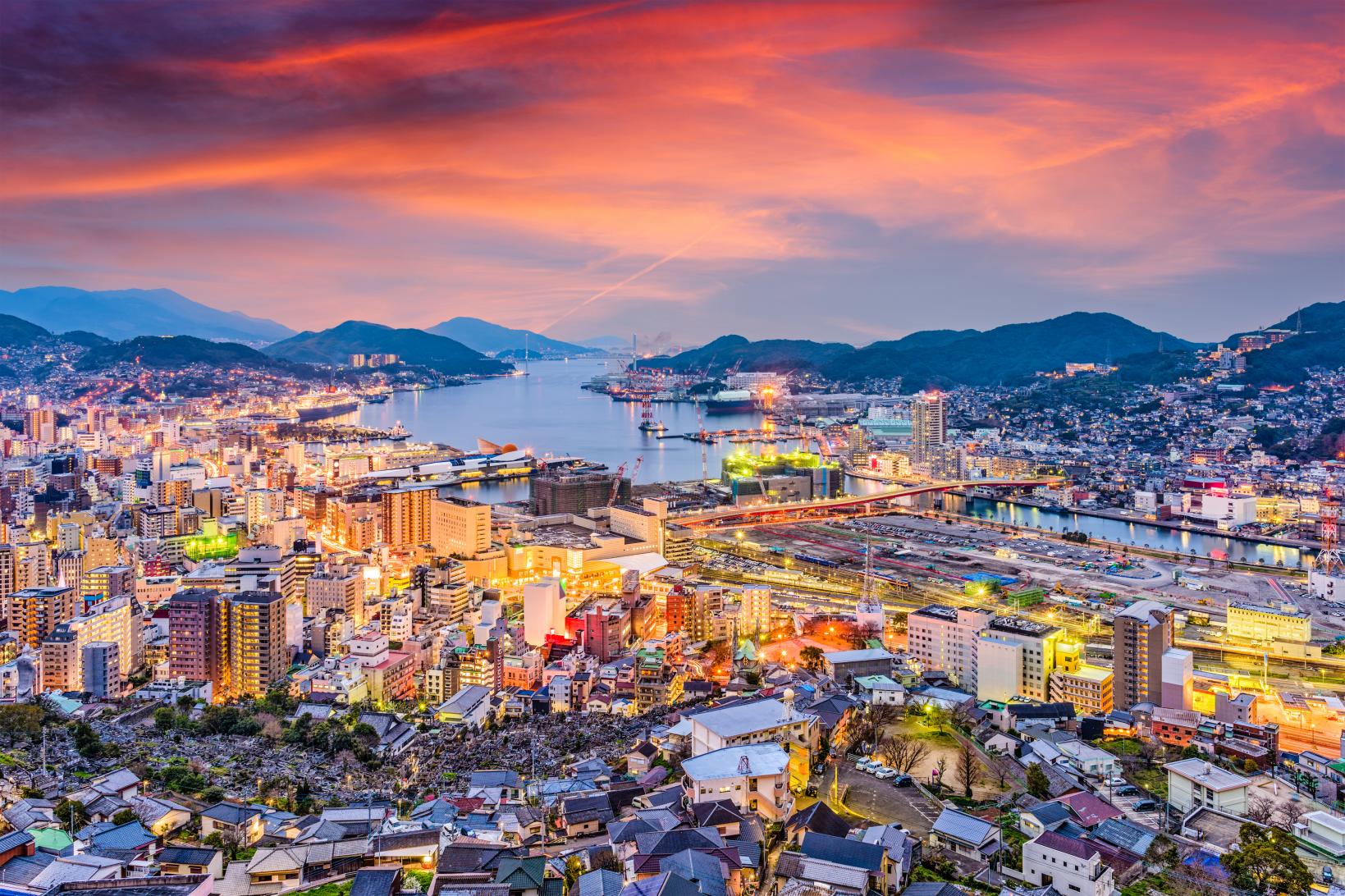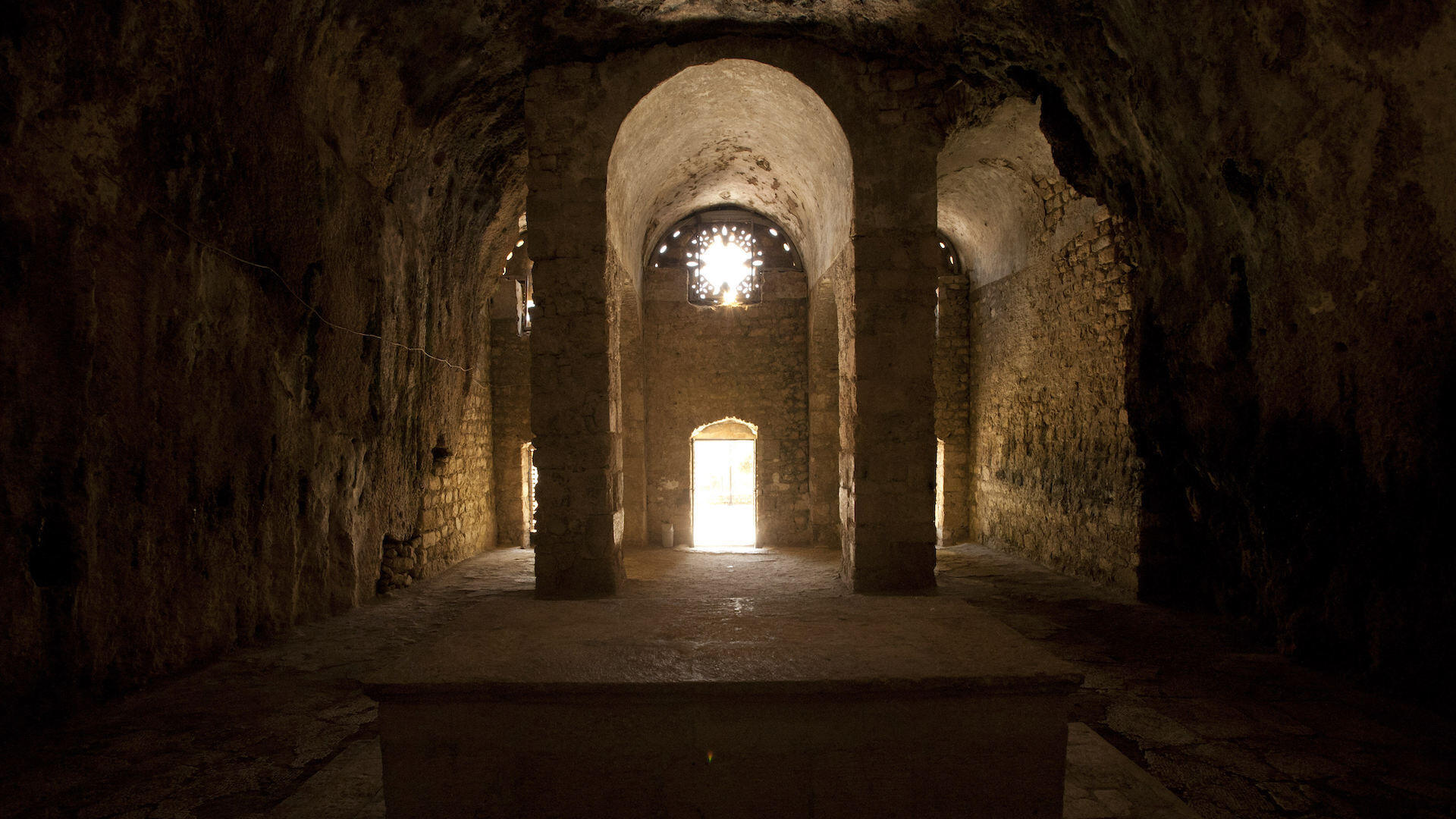
Nagasaki, the historic city located on the southwestern coast of Japan, is a place of immense cultural and historical significance. Known for its tragic past, Nagasaki is recognized globally as one of the two cities that suffered atomic bombings during World War II.
However, Nagasaki is much more than just its painful history. It boasts a rich heritage, stunning natural landscapes, delicious cuisine, and a welcoming local community that has risen from the ashes. Whether you are a history enthusiast, a food lover, or someone seeking serenity, Nagasaki has something to offer everyone.
In this article, we will delve into 39 fascinating facts about Nagasaki that will not only shed light on its resilient spirit but also highlight its diverse attractions and cultural treasures. So, fasten your seatbelts as we take a captivating journey through the captivating city of Nagasaki.
Key Takeaways:
- Nagasaki, located in Japan, offers a blend of history, culture, and natural beauty. From the tragic past to vibrant festivals, it’s a city of resilience and hope, captivating travelers of all interests.
- With its unique dishes, historical landmarks, and stunning landscapes, Nagasaki has something for everyone. Whether you’re a history buff, nature lover, or food enthusiast, this city has it all.
Nagasaki is located on the western coast of Kyushu Island in Japan.
Situated in the Nagasaki Prefecture, this picturesque city boasts stunning coastal views and a mild climate that attracts tourists throughout the year.
Nagasaki is renowned for its significant role in World War II.
On August 9, 1945, Nagasaki became the second city to be struck by an atomic bomb, changing the course of history forever.
The Atomic Bomb Museum in Nagasaki provides a poignant look into the devastating effects of the atomic bomb.
Visitors can learn about the events leading up to the bombing and the aftermath through powerful exhibits and personal accounts.
Nagasaki is home to the beautiful Nagasaki Peace Park.
This tranquil sanctuary serves as a reminder of the importance of world peace and offers a serene atmosphere for reflection.
Mount Inasa, also known as Inasayama, offers a breathtaking panoramic view of Nagasaki.
Visitors can reach the summit by cable car and enjoy the stunning cityscape, especially at night when the city lights up.
Nagasaki is famous for its unique local dish, Nagasaki Champon.
This delicious noodle dish features a combination of Chinese and Japanese flavors and is a must-try for any food enthusiast.
The Glover Garden is a historic open-air museum showcasing Western-style mansions that belonged to foreign merchants in the 19th century.
Visitors can explore the beautiful gardens and learn about Nagasaki’s international history.
The Nagasaki Lantern Festival is a vibrant event held annually to celebrate the Chinese New Year.
The city comes alive with colorful lanterns, traditional performances, and delicious street food during this festive time.
Nagasaki is home to the iconic Oura Church, which is one of the oldest Christian churches in Japan.
Its striking architecture and rich history attract numerous visitors each year.
The Nagasaki Kunchi Festival is a lively event that takes place in October.
It features traditional dances, music, and parades, offering a glimpse into Nagasaki’s cultural heritage.
Nagasaki is known for its unique “champon” noodles.
These thick, chewy noodles are typically served in a savory pork broth with various toppings such as vegetables and seafood.
The Nagasaki Lantern Festival is one of Japan’s largest lantern festivals.
During this event, the city is adorned with thousands of colorful lanterns, creating a magical atmosphere.
Nagasaki has a rich cultural heritage influenced by its historical connections with other countries.
Traces of Chinese, Dutch, and Portuguese influence can be seen in the city’s architecture, cuisine, and traditions.
Nagasaki is surrounded by beautiful natural landscapes.
From stunning coastal cliffs to lush mountains, nature lovers will find plenty to explore in and around the city.
Nagasaki is home to the famous Megane Bridge, also known as Spectacles Bridge.
Its unique design resembles a pair of spectacles when reflected on the water’s surface.
The Nagasaki National Peace Memorial Hall for the Atomic Bomb Victims provides a space for remembrance and contemplation.
Visitors can pay their respects to the victims and learn more about the lasting impact of the atomic bomb.
Nagasaki is known for its vibrant festivals throughout the year.
From the Kunchi Festival to the Lantern Festival, there’s always a celebration happening in Nagasaki.
The Nagasaki Atomic Bomb Museum houses artifacts and exhibits that shed light on the tragic events of August 9, 1945.
It serves as a reminder of the horrors of war and the importance of peace.
Nagasaki is a city of rejuvenation and resilience.
Despite the devastation caused by the atomic bomb, Nagasaki has rebuilt itself into a thriving and vibrant city.
The Nagasaki Peace Statue, located in the Peace Park, stands as a symbol of hope and peace.
It serves as a reminder of the importance of nuclear disarmament and the pursuit of a peaceful world.
Nagasaki is home to numerous hot springs, where visitors can relax and unwind.
These natural thermal baths offer a soothing experience and are believed to have healing properties.
Nagasaki is known for its colorful and lively Chinatown.
Visitors can indulge in Chinese cuisine, shop for souvenirs, and immerse themselves in the vibrant atmosphere.
The Nagasaki Penguin Aquarium is a popular attraction showcasing various species of penguins.
Visitors can learn about these fascinating creatures and even watch penguin feedings.
Nagasaki has a rich samurai heritage.
The city is home to Kaneyoshi Shrine, where samurai warriors used to visit to pray for victory in battle.
Nagasaki is known for its intricate and delicate traditional crafts, such as pottery and lacquerware.
Visitors can explore local craft shops and witness the skill and craftsmanship behind these beautiful art forms.
Nagasaki has a strong connection to the Dutch East India Company.
Dejima, a man-made island, served as a trading post between Japan and the Netherlands during the Edo period.
Nagasaki is home to the Nagasaki Lantern Festival Museum, dedicated to preserving the history and cultural significance of the Lantern Festival.
Visitors can learn about the origins of the festival and its importance to the city.
Nagasaki is a city of historical significance.
It was one of the few Japanese cities open to foreign trade during the Edo period and played a vital role in Japan’s modernization.
Nagasaki has a distinctive architectural blend of Eastern and Western influences.
From traditional Japanese temples to European-style buildings, the city’s architecture reflects its diverse history.
Nagasaki is home to the Nagasaki Prefectural Art Museum, which showcases a diverse collection of artworks.
Visitors can admire paintings, sculptures, and other artistic creations by local and international artists.
Nagasaki is renowned for its stunning night views.
The city’s scenic spots, such as Mount Inasa and Nagasaki Port, offer breathtaking vistas illuminated by city lights.
Nagasaki has a vibrant music scene.
From traditional Japanese music to contemporary genres, the city is home to talented musicians and hosts various concerts and festivals throughout the year.
Nagasaki is famous for its distinctive Nagasaki-style castella cake.
This moist and fluffy sponge cake was introduced by the Portuguese in the 16th century and has become a local specialty.
Nagasaki is home to Glover Garden, which provides a glimpse into the lives of Western merchants during the Meiji period.
Visitors can explore the beautifully preserved Western-style houses and picturesque gardens.
Nagasaki is surrounded by natural beauty, including scenic islands and coastal landscapes.
The Goto Islands, among others, offer stunning beaches, hiking trails, and a chance to immerse yourself in nature.
Nagasaki has a rich ceramic history.
The city’s pottery traditions, such as Hasami-yaki and Arita-yaki, have been passed down for generations and are highly regarded for their craftsmanship.
Nagasaki is a city of religious diversity.
From Shinto shrines to Buddhist temples and Christian churches, Nagasaki is a melting pot of different faiths and spiritual practices.
Nagasaki is known for its beautiful cherry blossom viewing spots.
During spring, parks and gardens in Nagasaki come alive with the delicate pink hues of cherry blossoms, creating a picturesque sight.
Nagasaki is a city of resiliency and hope.
Despite its tragic past, the city has bounced back and is a testament to the strength of its people and their unwavering spirit.
As you can see, Nagasaki is a city that offers a mix of historical significance, natural beauty, cultural diversity, and culinary delights. Explore the vibrant streets, immerse yourself in the rich history, and experience the warmth of the locals. Whether you are a history buff, a nature lover, or a food enthusiast, Nagasaki has something to captivate every traveler. Plan your visit to this remarkable city and discover the hidden treasures that await.
Conclusion
In conclusion, Nagasaki is a city filled with rich history, vibrant culture, and breathtaking sights. From its tragic past to its remarkable resilience, Nagasaki has become a symbol of hope and peace. The city offers a blend of traditional Japanese charm and modernity, making it a must-visit destination for travelers.With its stunning natural landscapes, such as the iconic Mount Inasa and the picturesque Nagasaki Harbor, the city provides visitors with stunning views that will leave them in awe. Additionally, Nagasaki’s unique cuisine, influenced by both Chinese and Western flavors, is a treat for food enthusiasts.As you explore Nagasaki, you will discover its many hidden gems, including the Nagasaki Peace Park, which pays tribute to the victims of the atomic bomb, and the beautiful Glover Garden, showcasing Western-style architecture.Whether you are a history buff, a nature lover, or simply seeking a culturally immersive experience, Nagasaki has something to offer everyone. Plan your trip and prepare to be captivated by the wonders that this incredible city has to offer.
FAQs
1. What is the history behind the atomic bombing of Nagasaki?
The atomic bombing of Nagasaki occurred on August 9, 1945, during World War II. It was carried out by the United States, resulting in the loss of thousands of lives and the devastation of the city.
2. Are there any memorials dedicated to the victims of the atomic bombing?
Yes, there are several memorials in Nagasaki that honor the victims of the atomic bombing. The Nagasaki Peace Park is one of the most notable, housing the Peace Statue and the Peace Memorial Hall.
3. Can visitors tour the Nagasaki Atomic Bomb Museum?
Yes, the Nagasaki Atomic Bomb Museum is open to the public and provides a comprehensive overview of the atomic bombing, including artifacts, photographs, and personal stories of survivors.
4. What are some popular attractions in Nagasaki?
Popular attractions in Nagasaki include the Nagasaki Peace Park, Glover Garden, Mount Inasa, Dejima Museum, and the Nagasaki Penguin Aquarium.
5. How can I get to Nagasaki?
Nagasaki is accessible by plane, train, and bus. The city has its own airport, Nagasaki Airport, and is well-connected to major cities in Japan by train and bus routes.
6. What is Nagasaki’s cuisine known for?
Nagasaki’s cuisine is known for its unique blend of Chinese and Western influences. Some popular dishes include Champon, Castella cake, and Sara Udon.
7. When is the best time to visit Nagasaki?
The best time to visit Nagasaki is during spring (March to May) and autumn (September to November) when the weather is pleasant and the city is adorned with cherry blossoms or colorful foliage.
8. Are there any traditional festivals in Nagasaki?
Yes, Nagasaki hosts several traditional festivals throughout the year. Some notable ones include the Nagasaki Lantern Festival and the Kunchi Festival, which showcases dynamic performances and parades.
Nagasaki's allure extends beyond its historical significance. Nature enthusiasts can explore the wonders of Nagasaki Bio Park, while sports fans cheer at Transcosmos Stadium Nagasaki. Football aficionados should check out the intriguing facts about V-Varen Nagasaki, the city's beloved football club. Each attraction offers a unique perspective on Nagasaki's multifaceted charm, inviting visitors to delve deeper into its captivating culture and hidden gems.
Was this page helpful?
Our commitment to delivering trustworthy and engaging content is at the heart of what we do. Each fact on our site is contributed by real users like you, bringing a wealth of diverse insights and information. To ensure the highest standards of accuracy and reliability, our dedicated editors meticulously review each submission. This process guarantees that the facts we share are not only fascinating but also credible. Trust in our commitment to quality and authenticity as you explore and learn with us.


